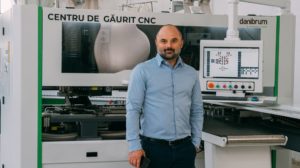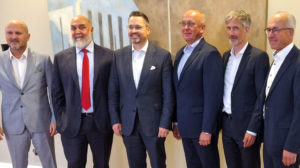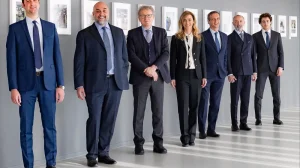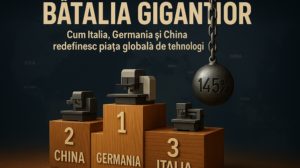
Reghin, in the county of Mures, is the home of musical instruments. The oldest, largest and most famous musical instrument factory here is HORA. The musical instruments produced at HORA reach more than 100 countries around the world and more than 801TPTP3T of the factory's output is exported.
To find out more about the place and the people who make the wood sing, we spoke to Nicolae Bâzgan, the factory's director.
WoodIndustry.News: When was your first encounter with the factory and musical instruments?
Nicolae Bâzgan: My first encounter with the musical instrument factory was on June 15, 1965 when, as a new engineer, I was assigned to the Wood Industrialization Combine (CIL) Reghin.
RdL: What was the beginning of musical instruments in Reghin?
NB: The industrial manufacture of wooden musical instruments began in 1951 in Reghin when the first 35 violins were made, according to a Soviet documentation.
RdL: In a nutshell, what was the mill's journey from a wood-processing combine to today's HORA?
NB: The production of instruments increased year by year, being favored both by the large resources of resonance wood and, above all, by the highly qualified and disciplined staff. In 1966, the new factory with a capacity of 20,000 pieces of musical instruments came into operation. In 1970 a new factory was opened with a capacity of 40,000 instruments and in 1980 another factory with a capacity of 80,000 instruments. In 1967 I was appointed head of the musical instruments factory at CIL, which in the meantime became the Wood Processing Enterprise (IPL). In 1990 IPL was renamed AMIS. Both IPL Reghin and the "heir" of AMIS, operated as a combined unit, manufacturing furniture as well as musical instruments. In 1991, for strictly professional reasons, the musical instruments part withdrew from AMIS and since then we have been operating as HORA, a company specialized in the manufacture of wooden musical instruments (violins, guitars, mandolins, mandolins, cymbals, bagpipes, xylophones, balalaikas, educational instruments, accessories, spare parts, etc.). Up to now we have produced over 4,320,000 musical instruments.
RdL: What is now the star tool of the production?
NB: Our star instrument is the acoustic guitar with preamp and EQ (equalizer).
RdL: You produce an impressive range of musical instruments. What special instruments do you produce?
NB: Special instruments include violins, violas, violoncellos, double basses, concert classical guitars, concert grand harpsichords, and the harpsichord, which is the most complex instrument we make.
RdL: Why do you think your customers choose you?
NB: Customers prefer us first of all for the acoustic quality and then for the decent price we sell at. Our factory, at the moment, is well rated on the foreign market as the biggest in Europe.
RdL: I understand that you also perform commissions for artists. Can you give me some names of artists for whom you have worked on musical instruments?
NBI made bowed instruments for Ion Voicu, George Iarosevici, Sile Dinicu, Mihai Constantinescu, Nicolae Botgros, Constantin Popescu.
Among the artists for whom I made wind instruments I can mention Gheorghe Zamfir, Radu Simion and Cornelia Tihon.
RdL: How to choose wood for musical instruments? Is it different for each instrument? What is the secret of the sound?
NB: Wood for the construction of musical instruments must have a homogeneous structure and be free from any defects.
Its drying must be slow to avoid internal tensions. And there's something else, very important: in order to be acoustically as good as possible, it must be old and the annual rings as regular as possible.
RdL: Can two violins that we see as identical sound different?
NB: You can never realize 2 instruments with the same acoustics precisely because of the large number of factors that contribute to the resonance of the instrument.
RdL: In the old days were there famous luthiers, for example Stradivarius? Do we have them?
NBThe factory, during its 65 years of existence, has created many makers of musical instruments, some of whom are now working on their own in the workshops in Reghin.
RdL: How would you summarize your current relationship with the factory and musical instruments in one sentence?
NB: First of all I feel obliged to thank my parents and teachers who have molded and qualified me. Also, I cannot overlook the understanding and goodwill of my family who supported me to achieve such performances. The principle is also true here: 'Man sanctifies place'.
































[...] wood with a recommended moisture content for wood used indoors of 8-12% (except for musical instruments) , and furniture pieces in white should be kept before finishing in areas with a temperature [...]
[...] unlike pine, it is used in the manufacture of musical instruments, as a resonance wood. Spruce is used to make resonance boxes for violins, violas, [...]